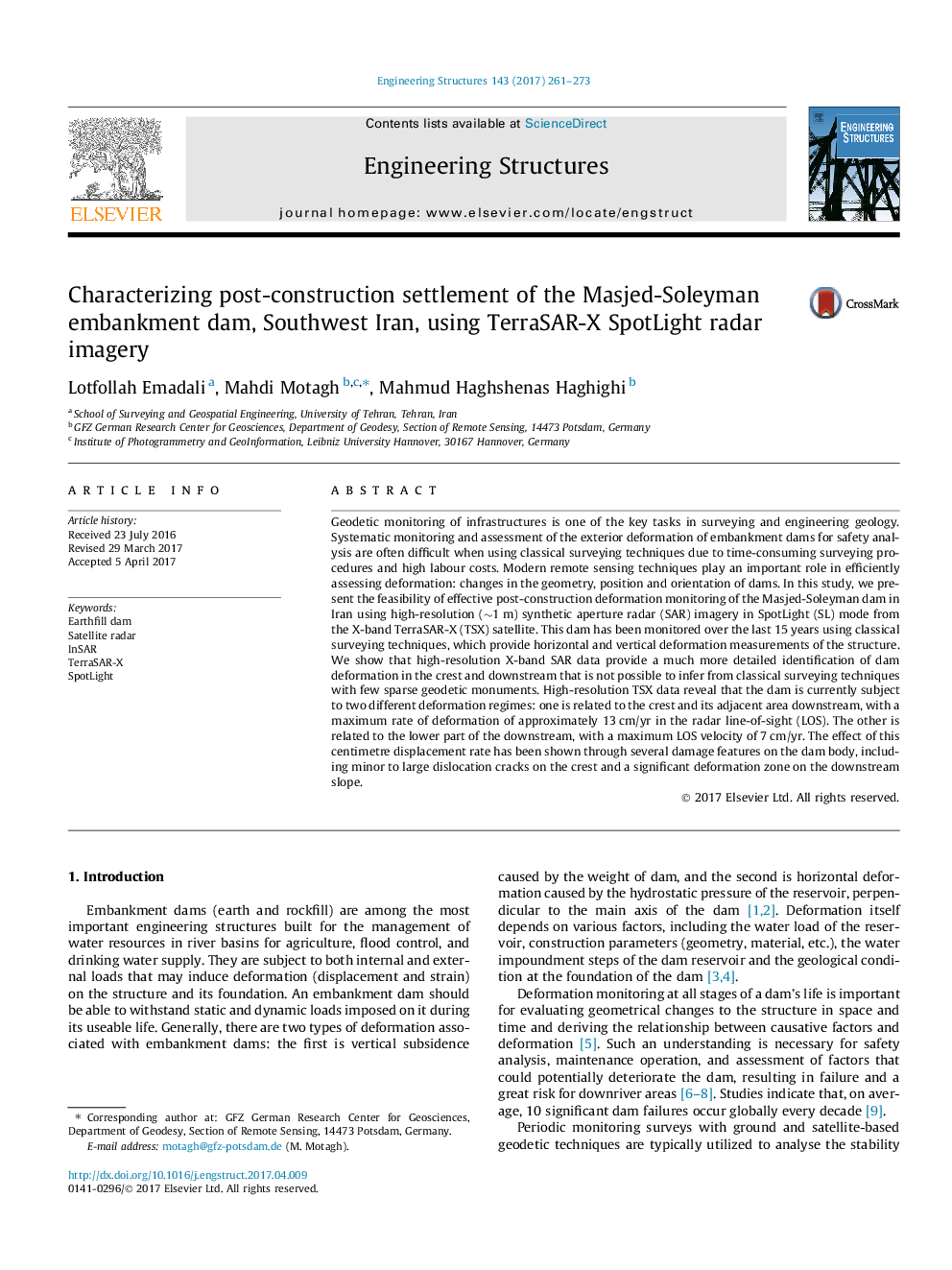| Article ID | Journal | Published Year | Pages | File Type |
|---|---|---|---|---|
| 4920069 | Engineering Structures | 2017 | 13 Pages |
Abstract
Geodetic monitoring of infrastructures is one of the key tasks in surveying and engineering geology. Systematic monitoring and assessment of the exterior deformation of embankment dams for safety analysis are often difficult when using classical surveying techniques due to time-consuming surveying procedures and high labour costs. Modern remote sensing techniques play an important role in efficiently assessing deformation: changes in the geometry, position and orientation of dams. In this study, we present the feasibility of effective post-construction deformation monitoring of the Masjed-Soleyman dam in Iran using high-resolution (â¼1Â m) synthetic aperture radar (SAR) imagery in SpotLight (SL) mode from the X-band TerraSAR-X (TSX) satellite. This dam has been monitored over the last 15Â years using classical surveying techniques, which provide horizontal and vertical deformation measurements of the structure. We show that high-resolution X-band SAR data provide a much more detailed identification of dam deformation in the crest and downstream that is not possible to infer from classical surveying techniques with few sparse geodetic monuments. High-resolution TSX data reveal that the dam is currently subject to two different deformation regimes: one is related to the crest and its adjacent area downstream, with a maximum rate of deformation of approximately 13Â cm/yr in the radar line-of-sight (LOS). The other is related to the lower part of the downstream, with a maximum LOS velocity of 7Â cm/yr. The effect of this centimetre displacement rate has been shown through several damage features on the dam body, including minor to large dislocation cracks on the crest and a significant deformation zone on the downstream slope.
Keywords
Related Topics
Physical Sciences and Engineering
Earth and Planetary Sciences
Geotechnical Engineering and Engineering Geology
Authors
Lotfollah Emadali, Mahdi Motagh, Mahmud Haghshenas Haghighi,
